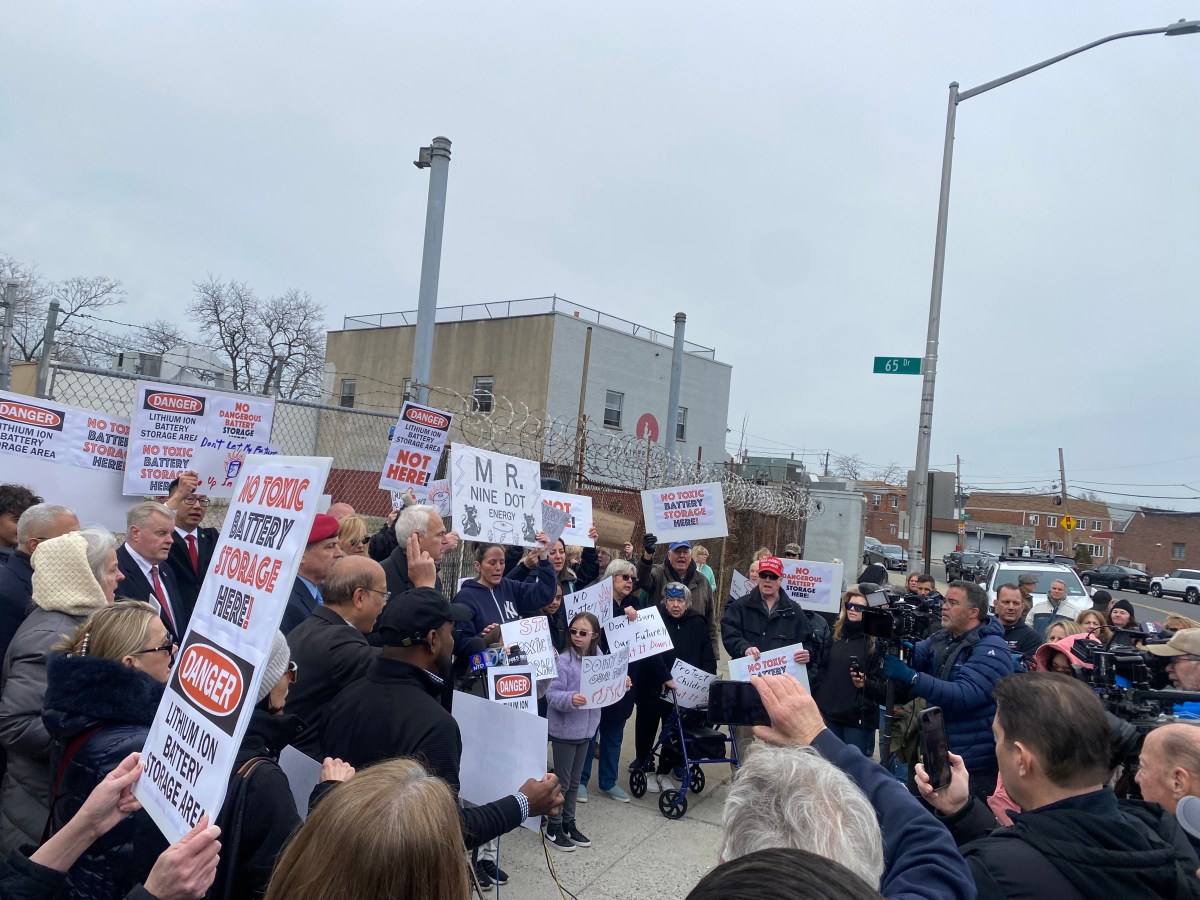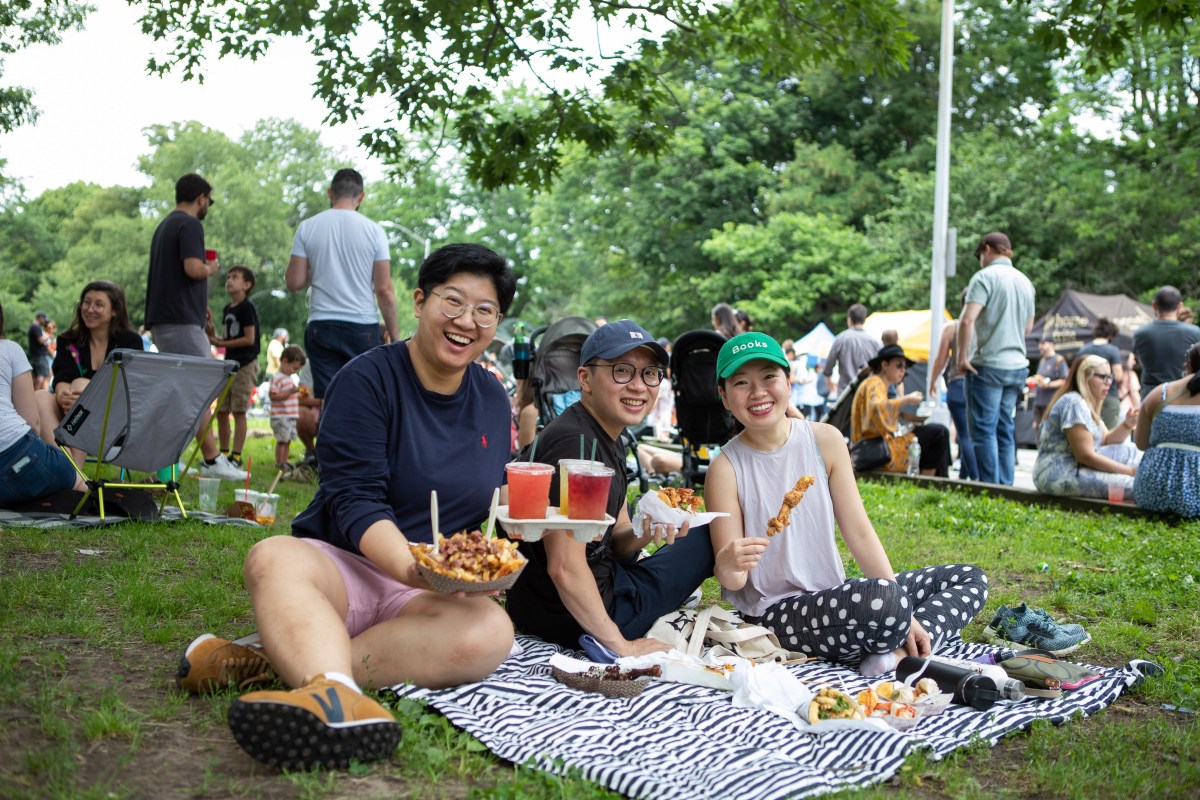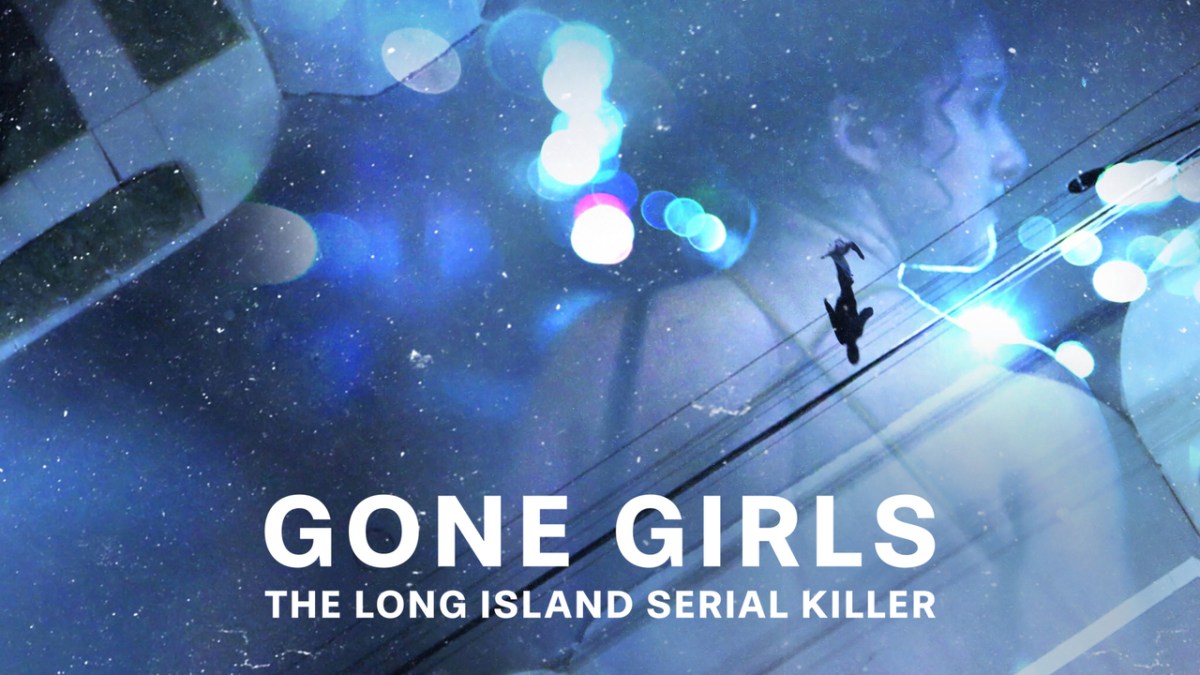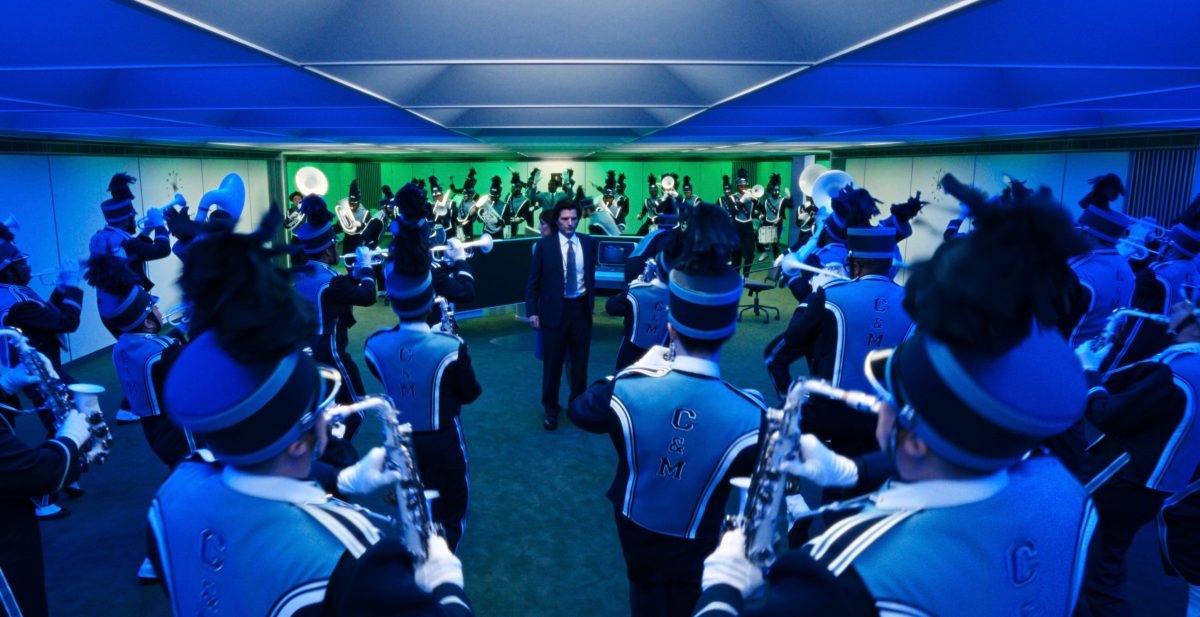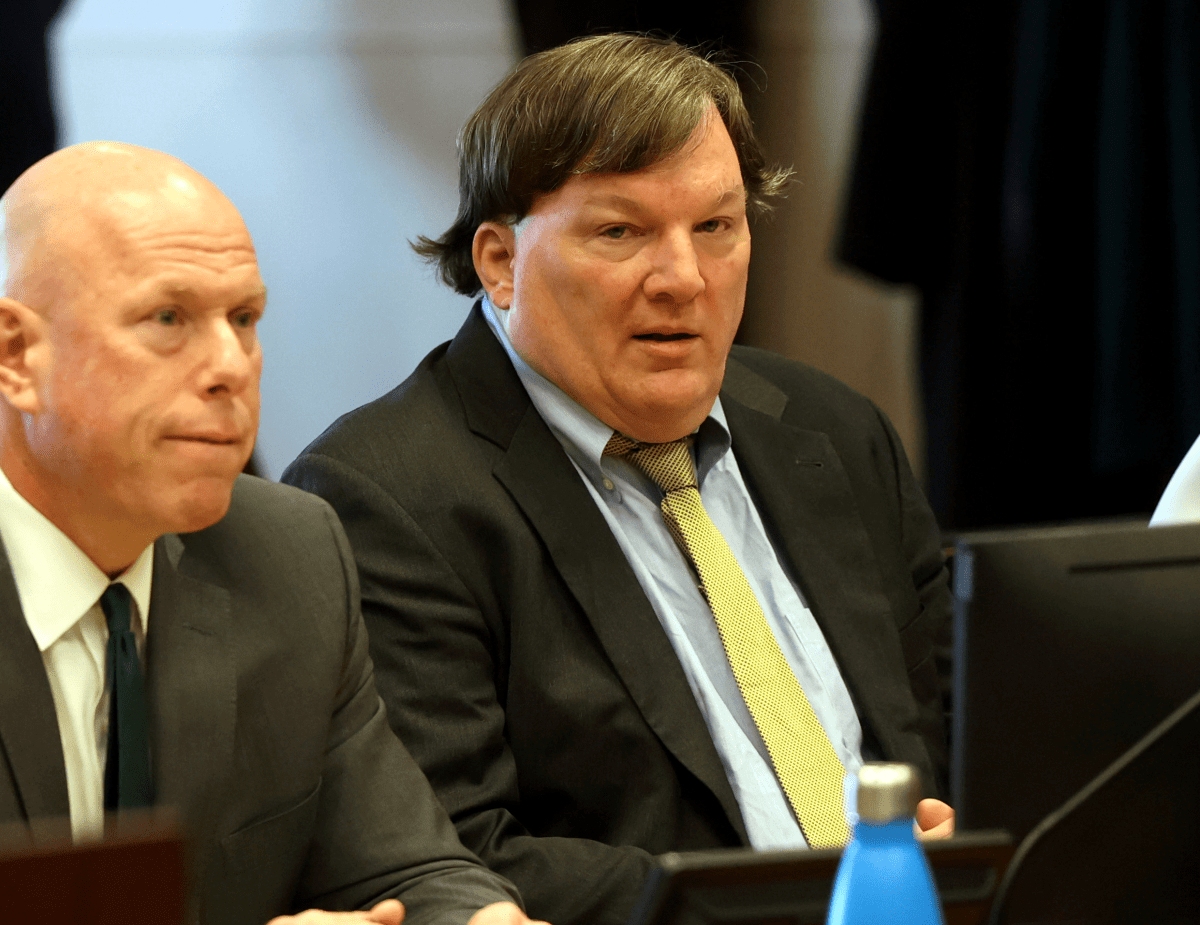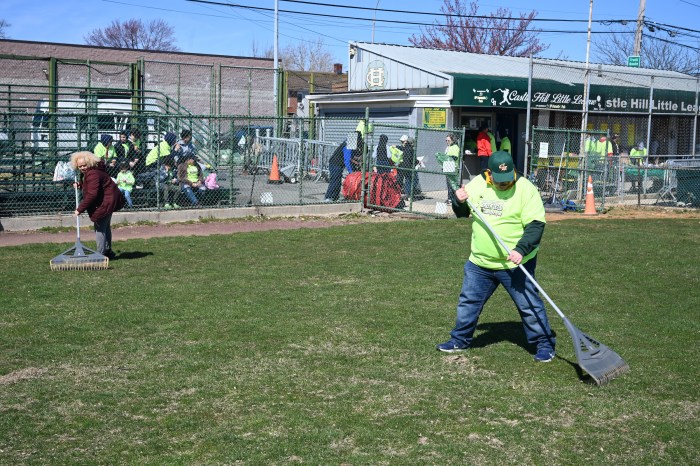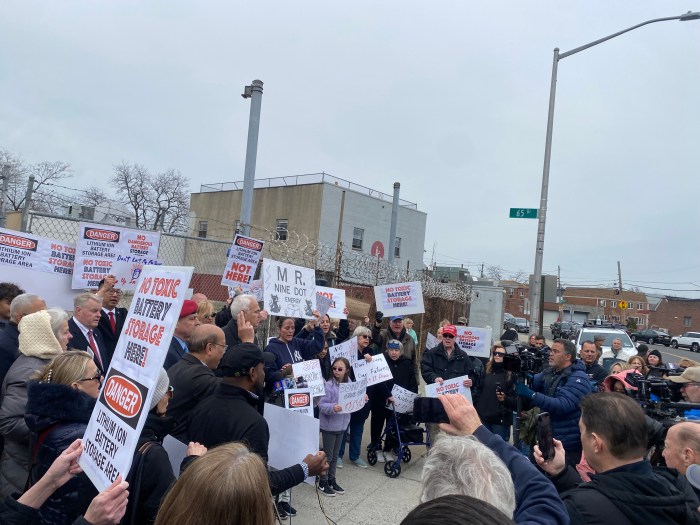
BY SAM SPOKONY | Local residents and youths, community organizations and settlement houses, elected officials, police and other stakeholders are working to create new partnerships and dialogue in response to the Jan. 4 shooting that killed a 16-year-old Baruch Houses resident.
While it was not their first meeting following the murder of Raphael Ward, those stakeholders gathered on Jan. 17 at Grand St. Settlement — only steps away from the site of the shooting, and a place where Ward was enrolled in recreational programs — for a landmark discussion about ideas to help quell the plague of youth violence in a Lower East Side neighborhood dominated by public housing. The gathering was basically a brainstorming session, but some of those present exuded a palpable sense of urgency. They made it clear that, in their eyes, this problem has fallen through the cracks too many times before, and that now is the time for action.
Among the more concrete issues raised involved the possible expansion of youth center programming to include more activities, later hours of operation and more outreach within area public housing developments; more collaboration between schools, police outreach programs and other groups; the concept of creating a totally unified, antiviolence message for all stakeholders to impart to local youths; the importance of job skills training for young people at risk; and the equal importance of identifying and aiding parents who are struggling to raise their children safely.
David Garza, executive director of Henry Street Settlement, was present at the Jan. 17 meeting, but he already has plans to expand his center’s programming, as told in an interview several days prior.
Specifically, he talked about a proposal to extend hours of operation at the settlement’s building at E. Sixth St. and Avenue D from its current 6 p.m. closing time to 9 p.m. on Tuesdays and Thursdays. The building is currently open until 9 p.m. only Fridays and Saturdays. Garza said he hoped to expand the programming enough to include 200 additional youths in the center’s activities.
“Key individuals in the community can catalyze larger movements, and we hope to use that strategy,” Garza said. “If we stay open longer and engage more young people, that can have a ripple effect and positively influence even more throughout the community.”
Luther Stubblefield, the former tenant association president of Baruch Houses, came to the meeting to stress the importance of parent outreach and skills training for youths. He pointed out that some kids end up spending most of their time on the streets because they either feel like they have no future or because their parents are not taking the time to push them toward positive goals.
“We need to communicate with the parents who are just sitting at home and aren’t being responsible enough, and that includes organizations like P.S.A 4 getting more involved to support those parents who are struggling,” Stubblefield said. “About 70 percent of our community is doing well and being positive, but now we have to focus on that other 30 percent.”
Police Service Area 4 is the Police Department unit dedicated to patrolling the public housing developments in Manhattan’s Fifth, Seventh, Ninth and Tenth Precincts.
Alongside several police officers, some of the youths enrolled in the P.S.A. 4 Explorers program — which works with boys and girls aged 14 to 20 — were also present at the community forum, and this reporter asked several of them what they would like to see from the adults who aim to stop youth violence.
“I really want to see adults show us what they’re trying to do as they’re planning it, and also for them to be clear with us about what they want us to do,” said Braulia Alvarez, 18, who lives in the Lower East Side’s Vladeck Houses. “Kids are mainly just connected to each other, and there’s not always good communication between us and the adults, so it’s not always clear what they’re doing or what they want.”
Samantha Isales, 15, a member of the Explorers program who lives in Rutgers Houses, said she believes that, for boys, violence and other issues can often be chalked up to a lack of positive role models — partially echoing Stubblefield’s point about parent outreach.
“Boys are too involved in money, and they always want things they can’t get, so they can impress their friends,” Isales said. “I think it’s maybe their older brothers or dads that are teaching them those things, and some don’t even have dads. It has a lot to do with families, but I don’t know if we can really do anything about that.”
A unified message?
While there was agreement on most of the general ideas raised at the Jan. 17 forum, some disagreement later surfaced over the concept creating a unified message — some kind of mission statement against violence, gangs and drugs that would be promoted by all community stakeholders.
During the meeting, Victor Papa, president of the Two Bridges Neighborhood Council, put forth that concept in a brief but passionate speech that drew applause from most of those in attendance. It also mirrored some of the very points being made by youths in the P.S.A. 4 Explorers program.
“What we need right now, as opposed to more services, is a common message that kids can hear, because that’s the core — and if we’re not doing that, then we’re not doing much,” Papa said. “In the case of [Ward’s] murder, there was a clear lack of understanding about what violence truly is. We need to focus on sending these kids a clear message if we want to change that.”
But John Wenk, principal of Lower Manhattan Arts Academy, a high school at Grand and Essex Sts., said in a later interview that he believes the neighborhood’s diverse stakeholders’ points of view should not all be confined within a single message.
“The truth is, everybody’s for peace, so the idea of a unified message might not be as meaningful as one would think,” Wenk said. “The strength of this community is in its diversity, and so there should be a symphony of messages rather than a single one. My message is about working hard, doing your homework, and getting into college. Then the church has its message, and the community organizations have theirs, and so on.”
Wenk, who was also at the forum, went on to say that, while he doesn’t favor a unified message, he does think there should be more collaboration between schools and other youth programming. He said he hopes representatives of organizations like the Grand Street, Henry Street or University settlements, as well as others, will come to his school in the near future and set up lunchtime presentations to expose students to the recreational and training programs available at their centers.
“It depends on how many responses I can get, but we’ll be here waiting for them,” Wenk said.
See something, do something
Some community members’ remain skeptical about the current calls to action regarding youth violence, saying that they have seen plenty of discussion, but no concrete solutions, after past Lower East Side teen murders. Several locals at the forum explained that they’ve started a grassroots group called See Something, Do Something, in order to further pressure elected officials, police and community organizations to take real action.
“We’ve been having shootouts in the neighborhood for a long time, and I always saw that people always talk about what needs to be done, but nobody was doing anything,” said group founder Lisah Ellison, 40, a Baruch Houses resident who has lived in the complex for eight years. “The situation of Raphael Ward’s death is near and dear to my heart, because I know his dad, and I really saw how it touched the community. So I formed an alliance, since we need to get our kids off the street and have all these meetings and reach a real solution.”
Ellison added that, since starting See Something, Do Something shortly after Ward’s murder, there are currently seven residents involved in the effort. After attending the Jan. 17 meeting, she said she was in wholehearted agreement with ideas about expanding youth center programming and keeping the centers open later at night. In particular, she said she wants to see more evening space available for 18-, 19- and 20-year-olds, asserting that such a change would have an immediate impact on keeping crime rates down.
Ellison also highlighted the problem of “turf wars” between youths in different housing developments. At the Jan. 17 meeting, another member of the group said that kids are often scared to enter other developments, and that many parents are hesitant to send their children to youth centers in other developments because of the perceived danger involved in violating a particular gang’s territory.
So Ellison’s group expressed particular excitement about one particular announcement at the forum, which was that Manhattan Borough President Scott Stringer, in association with other local state and city elected officials and numerous other community stakeholders, will lead a “Unity Rally” to highlight and address the problem of youth violence. A spokesperson for Stringer said the march will take place on Thurs., Jan. 31, beginning at 5:30 p.m. at the corner of E. Sixth St. and Avenue D.
“Peace rallies will help to break down the turf wars, and this is something we need because it shows we’re all serious,” Ellison said, adding that she hopes that similar community walks will take place more frequently after that, perhaps even once each week.
But she stressed that, even with all the good intentions she’s seen so far, she won’t be satisfied until productive plans are actually implemented.
“We liked the ideas at that meeting, but now we want to see them put into action,” she said. “It doesn’t stop here, and we all need to keep showing up to other forums, stay focused, and remember that we’re all in this together.”
Another l.e.s. gun buyback?
Notably, a representative of the Manhattan District Attorney’s Office was also present at the Jan. 17 meeting, and told this reporter that the D.A.’s Office is thinking about planning another gun buyback event as a response to Ward’s shooting. Last October, the Lower East Side’s first such event — which allows gun owners to anonymously turn in their firearms in exchange for cash — took 50 weapons off the street, including 14 semiautomatics.
Since that buyback occurred at the Rutgers Houses Community Center, at Madison and Rutgers Sts., it could be likely that a second event would be placed closer to Baruch Houses, where Ward lived and was murdered, though the D.A.’s Office didn’t provide further information. Police said after the October buyback that four of the guns they received had been altered, indicating they even more likely had been used — or would have been used in the future — to commit crimes.
Next steps
In addition to the Jan. 31 rally, another community forum has been planned to continue this discussion.
Melissa Aase, executive director of University Settlement, who led last week’s forum, said that the next meeting — which will focus specifically on the issue of coordinating all of the area’s youth-service organizations — is currently scheduled for Mon., Feb. 4. She added that “many more” next steps will be worked out as well, and said she was “truly heartened” by the diverse turnout at the initial forum.
“The issues of violence, economic justice, housing and community safety are intertwined and complicated,” Aase said, following the meeting. “We want to take small, thoughtful steps that include all these voices, and coordinate what we already have that is so strong in this community. We have parents that care deeply, youth with big dreams and potential, and a strong range of youth-serving organizations and adult supports.
“Like President Obama said in his inaugural address, all citizens’ voices are needed to solve social problems — not just our votes, but our voices and engaged action,” Aase said. “That’s what I saw on Thursday evening. That is what is strong and hopeful about our community, even when we are hurting.”





